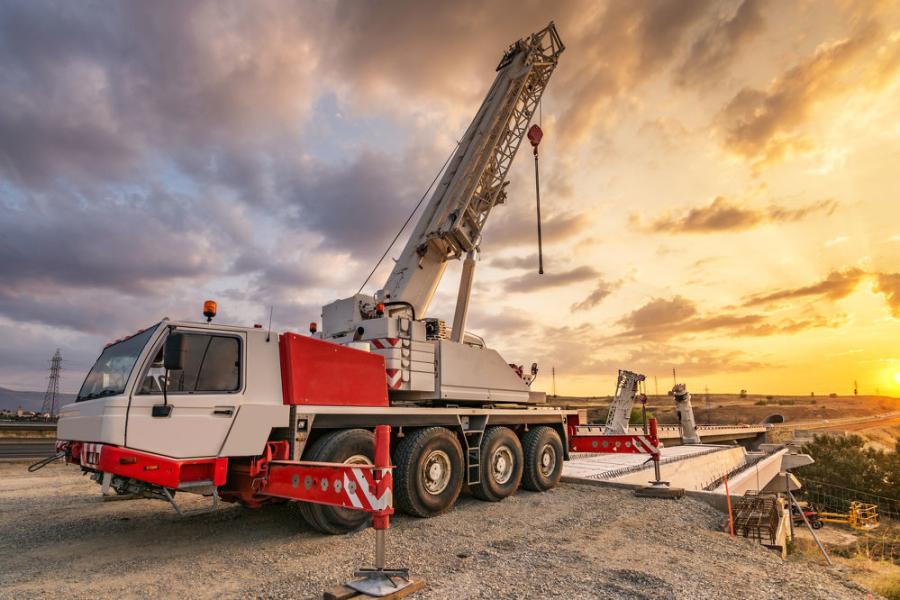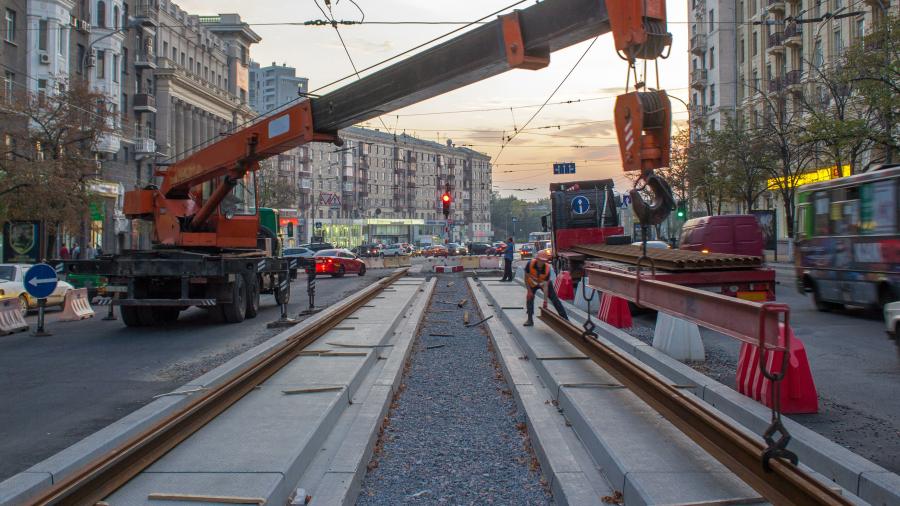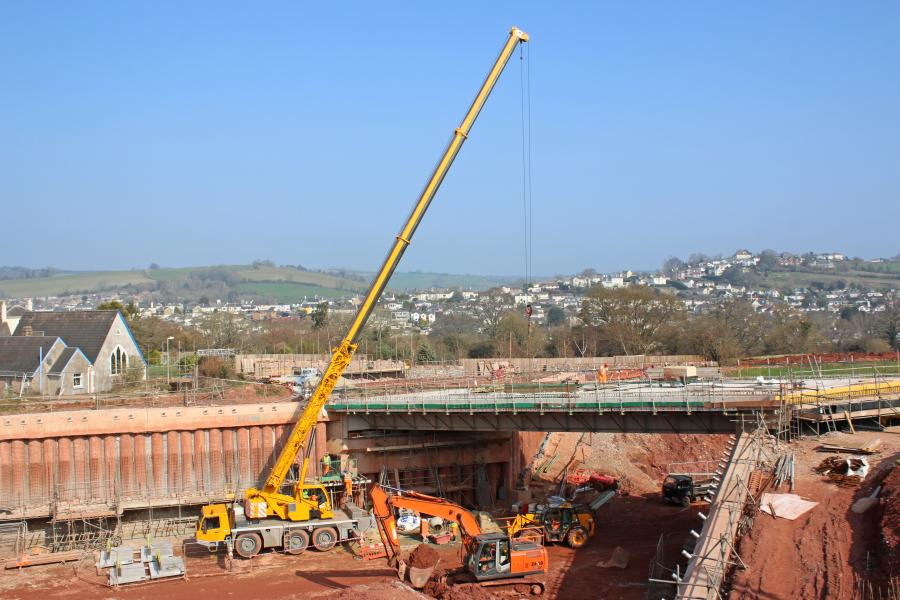
Mon June 6, 2022
Lucy Perry – CEG CORRESPONDENT
The goal of telematics is to make life easier for the crane owner, said Marco Busconi, Terex rough-terrain crane engineering director.
With the technology, equipment owners and managers can make more effective business decisions as they maintain a safe work environment for employees and site owners. One of the biggest areas in which telematics can impact your crane operations is in fuel conservation.
It's no surprise that a rise in fuel costs is having a sizeable impact on fleet operators, said Anthony Laras, national manager transport of telematics manufacturer Teletrac Navman.
"However, this difficult situation offers a unique opportunity for fleet operators to take control of fuel costs to ensure long-term success, rather than just weathering this short-term fuel storm," he said.
In fact, fuel is the second-largest expense for trucking companies beyond labor, according to telematics technology developer PowerFleet.
The statistics applies to construction fleets of all types, including mobile cranes.
"According to data from the EPA, fleets could save thousands of dollars per truck each year by limiting excessive idling and reducing maximum speed limits," said the company. "When multiplied across an entire fleet, these cost savings could amount to tens of thousands of dollars per year or more — even for a modest-sized fleet."
Laras believes that by exploring the causes of fuel inefficiencies and embracing the latest telematics technology and fleet management solutions, a company fleet will stay on the move now and well into the future.
Filling the Fuel Piggy Bank
Laras said improving route planning and tracking for the entire fleet by reducing unnecessary miles to save on fuel costs is the easiest step crane owners can take to improve long-term fuel efficiency throughout the entire fleet.
"At its most basic, GPS fleet tracking can give businesses instant visibility to allocate fleets more efficiently and enhance accountability," he said.
Beyond this, the latest in AI-powered telematics technology also can measure everything from vehicle locations to time spent at a job and travelling time. "There's even a tool to maximize fuel tax rebates."

Telematics platforms also optimize route planning to shave off unnecessary mileage from trips.
As Laras explained it, the application will consider scheduled stops for jobs and compliance waypoints. The pre-prepared journey is then available in real-time to select on an in-vehicle device.
"If a vehicle deviates from a set path, the driver is notified and immediately directed back to the defined route via the safest roads," he said. "Back-office staff are also alerted, helping managers identify recurring issues and overcome inefficiencies. This simultaneously saves fuel and protects assets while increasing driver safety and compliance."
Inefficient logistics operations can lead to trucks traveling empty, unnecessarily idling and using longer or congested routes, said PowerFleet.
By some estimates, 15 percent or more of annual truck miles may be empty miles that don't generate any revenue.
"Typical long-haul trucks could be driving 15,000 miles per year and consuming over 2,400 gallons of diesel fuel without cargo in these instances."
Idling consumes about 0.8 gal. of fuel per hour, the company noted. While idle time is often necessary there may be an opportunity to significantly cut down on fuel usage by reducing unnecessary idling time.
PowerFleet believes the combination of telematics and intelligent routing software can help improve logistics:
- Intelligent routing software optimizes routes based on driver hours of service, vehicle size constraints, equipment availability and other factors to maximize fuel economy.
- Telematics can help track detention times and enforce shipper or receiver fines. You can also identify internal materials handling teams that may be causing unnecessary detention times.
- Telematics can show the real-time locations of fleet assets to proactively alert receiving docks before a truck arrives, enable live-loads and avoid empty trailers.
"The EPA estimates that a mere 1 percent reduction in empty miles could save over 100 gallons of fuel and increase ton-miles by nearly 20,000 per year," said PowerFleet. "At the same time, reducing idling time by 5 percent could save another 100 gallons of fuel each year, resulting in a far superior fuel economy."
Predicting Savings
One aspect of telematics technology worth exploring are the multitude of benefits gained from predictive maintenance.
Considered an essential tool for the crane fleet manager, with this concept an equipment manager can maintain assets successfully and efficiently. This, in turn, results in improved fuel efficiency.
"Equipment management solutions use historical data to identify and alert fleet managers of what equipment and vehicles need maintenance and when," said Laras. "Digitized systems fully automate maintenance routines with custom schedules and real-time access to equipment diagnostics and inspection reports."

Ensuring key vehicle components, from tires to engine, are well-maintained can have significant benefits for fuel efficiency, Laras added.
"For example, reduced tire pressure, misaligned wheels and bad spark plugs can increase resistance, reducing fuel efficiency by up to 10 to 30 percent."
Using automated digital tracking solutions makes predictive maintenance an easy task for businesses and helps to avoid costly breakdowns.
"It also greatly reduces manual labor on paper-based processes — increasing efficiency and savings both on and off-road," said Laras.
PowerFleet goes into detail about the various systems within a construction machine that can be proactively maintained to not only avoid breakdowns but also improve fuel economy.
"Regular and proactive maintenance is essential to improve fuel economy, satisfy federal regulations, extend vehicle lifespans, reduce the odds of emergency repairs, and increase fleet uptime. After all, a single roadside breakdown can cost thousands of dollars in lost productivity.
- Lubricants reduce friction and wear-and-tear on the engine, transmission and drivetrain. Using synthetic lubricants can improve fuel economy by at least 3 percent, saving nearly 500 gal. of fuel each year while reducing wear and maintenance.
- Underinflated tires produce heat and rolling resistance, reducing fuel economy by 0.5 percent to 1 percent per 10 psi below recommendations. According to a recent survey, less than half of tires were within 5 percent of the recommended inflation pressure.
- Old components often weigh much more than newer lightweight components, reducing fuel economy. Replacing these components with aluminum, metal alloys, metal matrix composites and other lightweight components can improve your mileage.
"Tracking all these maintenance items can be a nightmare when you multiply them by an entire fleet," said PowerFleet. "Moreover, mileage-based maintenance may not be the best way to plan maintenance since it doesn't necessarily correlate with actual maintenance problems."
Instead, predictive maintenance uses telematics to track vehicle usage patterns and predict optimal maintenance times.
"For example, different drivers may have separate braking habits that influence brake pad and engine health, creating unique maintenance requirements."
Driving Fuel Savings
The habits of crane drivers can drastically impact fuel efficiency. Laras of Teletrac Navman pointed out that driving faster than necessary, aggressive acceleration, harsh braking and idling can all burn through excessive fuel.
Reducing a truck's average speed can reduce fuel consumption. The most common way to improve driver habits is through proper training and education, wrote PowerFleet.
Onboard dashcams equipped with telematics data and sensors can provide insight into driver metrics to identify training opportunities.
"The camera can provide real-time alerts to reduce inefficient driving habits instantly," said Laras. "Smart dashcams also come equipped with built-in scorecard and coaching features to create long-term, fuel-efficient driving habits."
The live dashboard displays fleet and individual driver metrics so that drivers have complete insight into their performance.

"They can see how they compare with colleagues to foster healthy competition and encourage improvement."
Drivers also are alerted when there's a significant change in metrics, he said, either positive or negative.
"The system provides tips and feedback to help them set measurable goals and improve their driving habits and fuel efficiency over time."
Of course, positive reinforcement helps improve compliance over the long term, said PowerFleet.
Telematics solutions measure driver behavior in real-time, including speed, braking, acceleration and other habits, making it easy for managers to reward good behaviors and address any problems early on.
Jim French, a telematics specialist of Teletrac Navman, said many crane operators don't know enough about fuel tax credit rebates and may not be claiming everything they're entitled to.
Using GPS tracking and the second-by-second data it provides, operators can calculate for all road work.
"Telematics also makes it possible to determine times the engine was used to operate the crane, giving you the ability to claim the maximum rebate available for that equipment," said French. "You can accurately assign fuel use to the correct part of any operation, reducing overall fuel costs in your business."
The goal of telematics is to make life easier for crane owners by reducing the total cost of ownership and not inundating them with meaningless data, said Busconi of Terex.
"It is about useful information that can help customers establish how they can increase productivity and mitigate downtime."
The bottom line is, soaring fuel costs require more than "a band-aid approach." Laras suggested identifying and tackling the root causes of fuel inefficiencies and adopting integrated fleet management solutions to create a solid foundation for long-term growth.
"Fuel costs may continue to rise, but with smart systems in place, you'll give your business the best chance at a successful, fuel-efficient future." CQ
 Cranes Equipment
Cranes Equipment Articles
Articles Email Updates
Email Updates Sell Your Machines
Sell Your Machines

 Cranes Equipment
Cranes Equipment Cranes Dealers
Cranes Dealers Cranes Articles
Cranes Articles Email Updates
Email Updates Sell Your Machines
Sell Your Machines